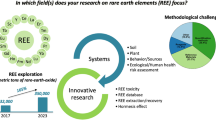Abstract
-
DOI: http://dx.doi.org/10.1065/lca2004.09.180.12
Goal and Scope
Primary and secondary environmental impacts associated with bioremediation of diesel-contaminated sites were assessed using a retrospective life cycle assessment (LCA) as a function of the duration of treatment and the achievement of regulatory criteria. The case study was the remediation with biopiles of 8000 m3 of subsurface soil impacted with an average of 6145 mg of diesel fuel/kg soil during a two-year period.
Methods
Two scenarios were compared; the construction of a single-use treatment facility on site or the use of a permanent treatment center that can accept 25000 m3 soil/year. Moreover, since bioremediation is never 100% efficient, different efficiency scenarios, including the transportation of partially treated soil to landfill were analyzed. The primary impact of residual soil contamination was determined by developing a specific characterization factor (ecotoxicity and human toxicity categories in the EDIP method) based on the toxic components of diesel. Secondary impacts were assessed with an LCA software.
Results and Discussion
One major observation was the fact that the soil itself is responsible for an important fraction of the system's total impact, suggesting that it is beneficial to reach the highest level of remediation. The reutilization of the treatment facility is also an important issue in the overall environmental performance of the system. In the case of a single-use treatment center, the analysis showed that site preparation and site closure were the major contributing stages to the overall impact, mainly due to the asphalt paving and landfilling processes. Results indicated that off-site transport and the biotreatment process did not contribute notably to the level of environmental impact. The use of a permanent treatment center is preferred since it allows a significant decrease of the secondary impact. However, when soil had to be transported for a distance greater than 200 km from the site, global impacts increased significantly. Conclusion – Results from this study allowed identifying several process optimizations in order to improve the environmental performance of the biopile technology including: the achievement of low level of residual contaminants, the minimization of asphalt or the use of a permanent treatment center.
Recommendation and Outlook
LCA was found to be an efficient tool to manage contaminated soil in a sustainable way. However, because of the major contribution of residual soil contamination, additional spatial and temporal data should be collected and integrated in the substance characterization models.
Similar content being viewed by others
Author information
Authors and Affiliations
Corresponding author
Rights and permissions
About this article
Cite this article
Toffoletto, L., Deschênes, L. & Samson, R. LCA of Ex-Situ Bioremediation of Diesel-Contaminated Soil (11 pp). Int J Life Cycle Assessment 10, 406–416 (2005). https://doi.org/10.1065/lca2004.09.180.12
Received:
Accepted:
Published:
Issue Date:
DOI: https://doi.org/10.1065/lca2004.09.180.12




